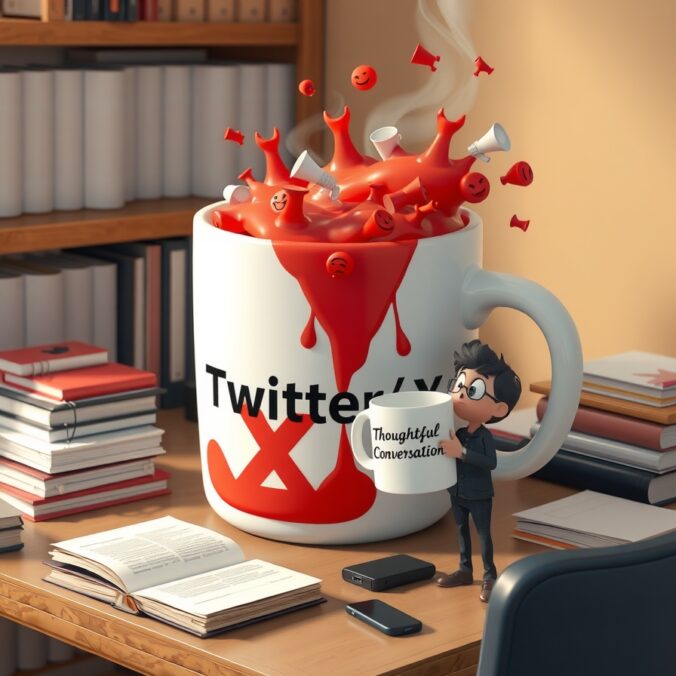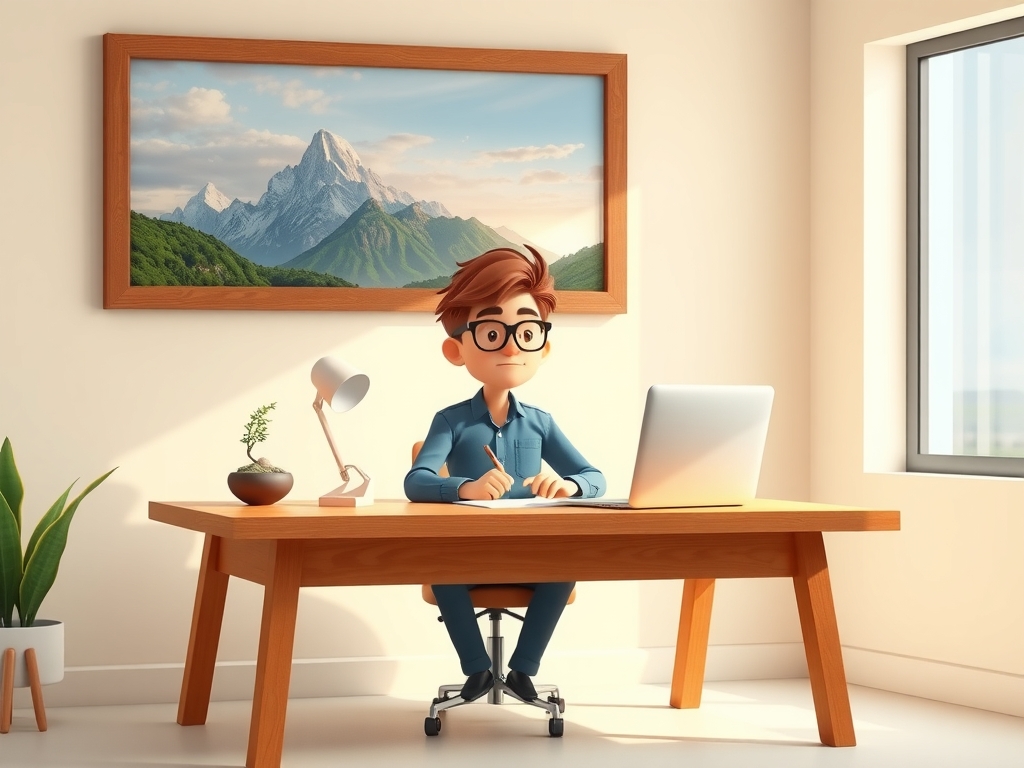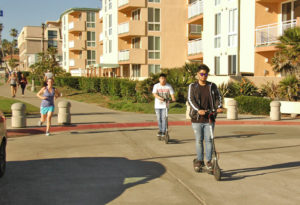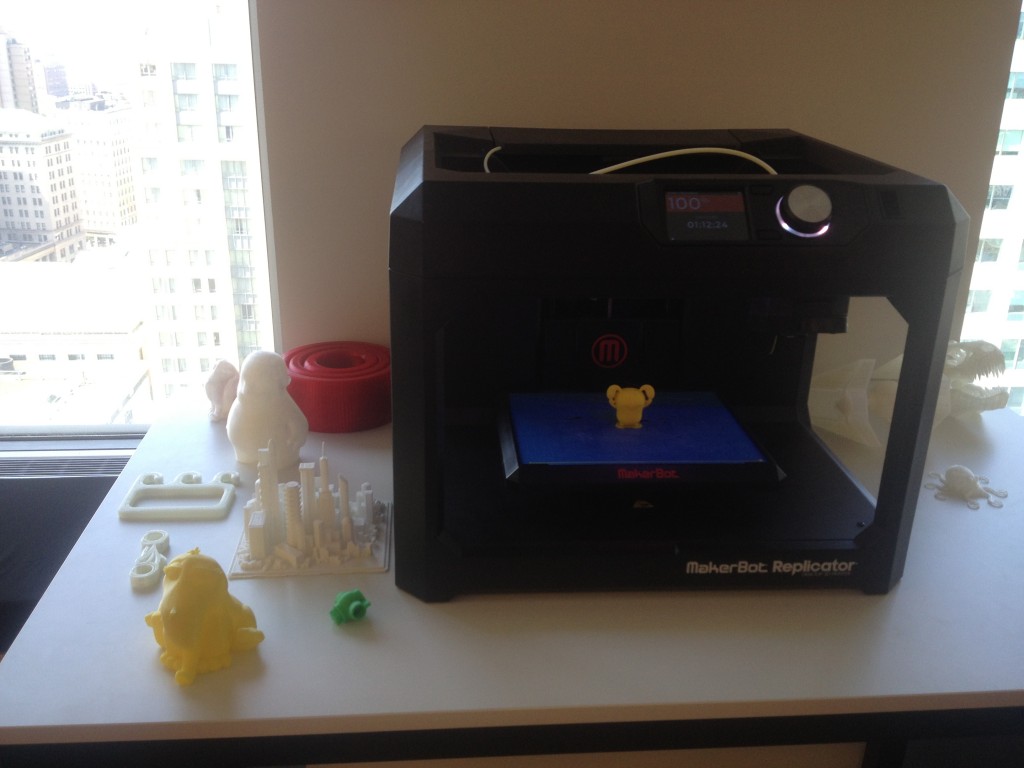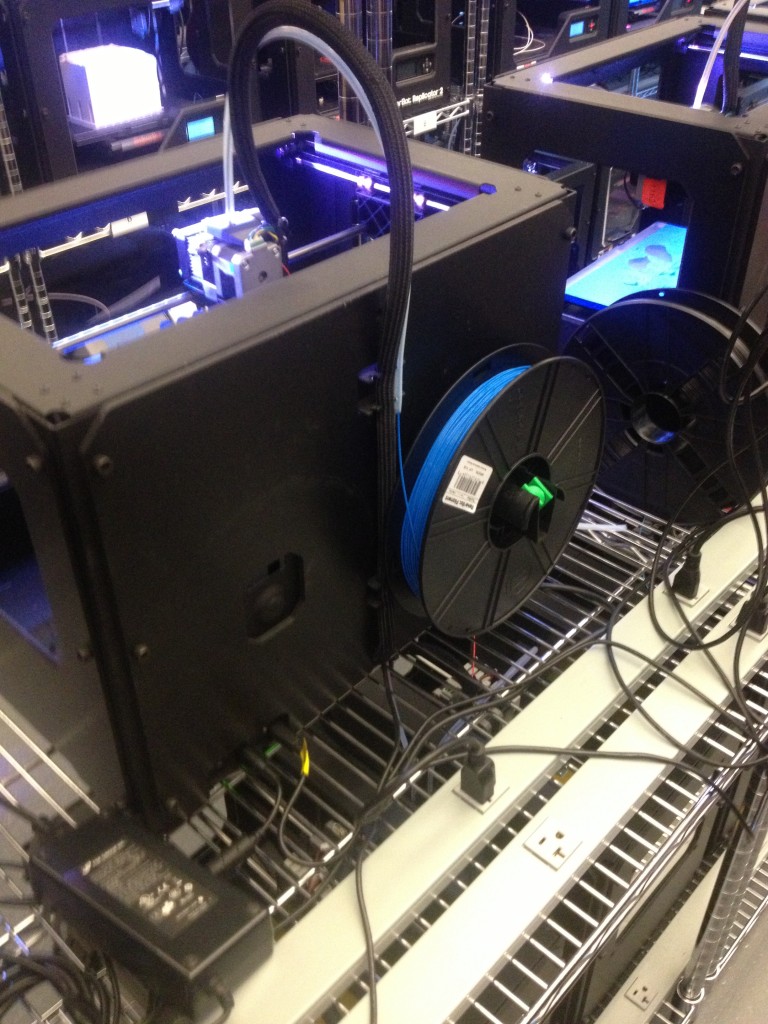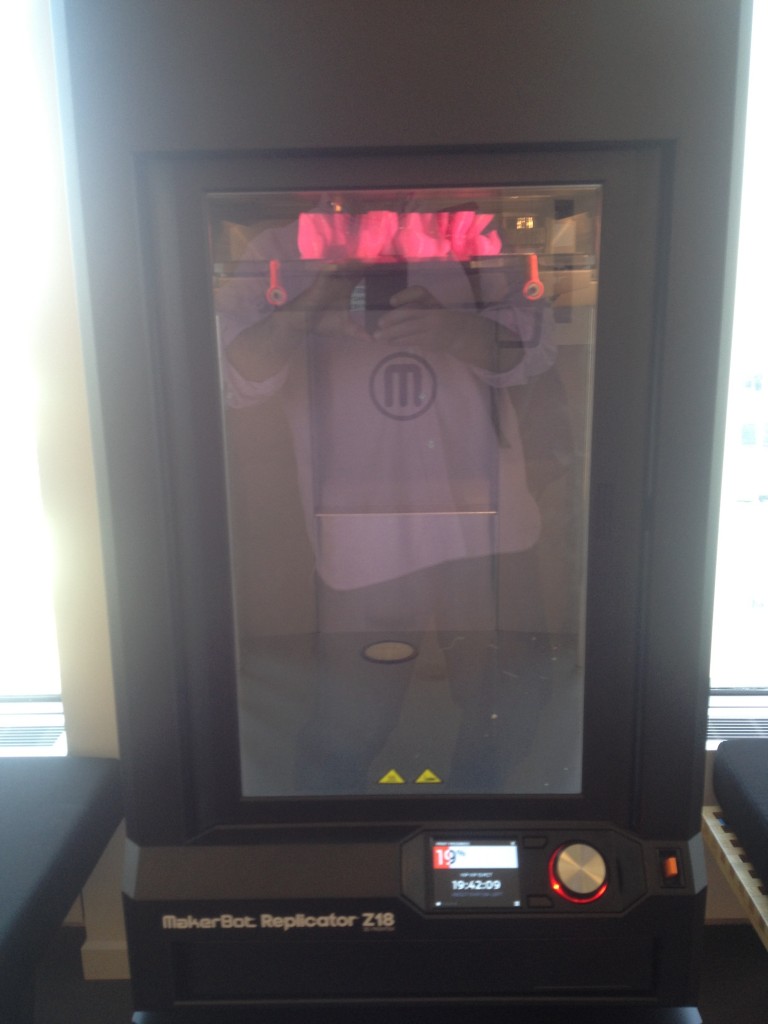I’d love to know the story why a high value url like Email.com sits unused. Surely some company has the capital to buy the url and redirect it to their own email platform. Gmail? Heck, it seems like just the thing Microsoft would do to boost traffic to Bing. Anyone know the story?
Category: Technology (Page 1 of 3)
TL;DR Version
Twitter used to be a platform for discovery, curiosity, and real conversations. Over time, it shifted, to a space for customer complaints, then into a political battleground, and eventually into something stranger. Today, much of what passes for “debate” is driven by bots, automated replies, and talking points that feel like they were built in a conspiracy theory factory.
Research backs this up. Bots have been responsible for a disproportionate amount of political content for years, up to 30% or more, depending on the topic. The result is a platform where real engagement is harder to find, and actual people seem increasingly absent.
Continue readingResearch in psychology and psychiatry suggests that certain types of images or visual stimuli can help individuals improve focus and reduce distractions. These images often leverage principles of attention regulation, mindfulness, and environmental design. Here are a few scientifically-backed approaches:
1. Nature Scenes
- Why it works: Studies show that exposure to nature or even viewing images of natural environments can restore attention and reduce mental fatigue. This is based on the concept of Attention Restoration Theory (ART), which suggests that natural environments engage our attention in a gentle, involuntary way, allowing the directed attention system to rest.
- Example Images: Forests, flowing water, mountains, and greenery.
- Best Use: Displaying posters, screensavers, or paintings with calming natural scenes.
2. Abstract Art with Low Complexity
- Why it works: Complex or cluttered images can overstimulate individuals with ADHD, while simple, abstract designs or patterns can create a calming effect and reduce distractions.
- Example Images: Geometric patterns, smooth color gradients, or minimalist art with soft tones.
- Best Use: Use as background art in workspaces or as phone wallpapers.
3. Mandala Patterns
- Why it works: Mandalas and other symmetrical designs can promote mindfulness and focus through their repetitive and orderly structure. Some ADHD therapies include coloring mandalas to improve focus and reduce hyperactivity.
- Best Use: Use as interactive exercises (e.g., coloring apps) or as visual elements for meditation breaks.
4. Images with Blue and Green Hues
- Why it works: Blue and green are associated with calmness and focus. Research has shown that these colors can help regulate mood and improve attention span.
- Example Images: Ocean waves, clear skies, green fields.
- Best Use: Backgrounds for work environments or calming breaks.
5. Goal-Oriented Visuals
- Why it works: Visuals that represent goals, steps of a task, or progress can help individuals with ADHD stay task-oriented. Seeing a visual roadmap of their objectives can reduce the cognitive load and prevent distractions.
- Example Images: Infographics, step-by-step diagrams, or progress trackers.
- Best Use: Incorporate into task planning or to-do lists.
6. Soft Animated Visuals
- Why it works: Slow, non-distracting animations (like a gentle ocean wave or a flame flickering) can serve as a grounding point for focus. These animations are particularly useful for reducing anxiety and helping individuals stay engaged without overstimulation.
- Best Use: Display on digital devices or monitors as a background focus tool.
7. Visual Reminders of Break Spaces
- Why it works: Seeing a calming visual associated with a planned break (e.g., a peaceful garden or quiet reading corner) can create a mental cue for focused work until the break arrives.
- Example Images: Personalized images of a favorite relaxation spot or a digital timer with an image of the break area.
- Best Use: Use as desktop backgrounds or on task management tools.
I know you’re going to hate hearing this. I hate writing it. But if your brand still isn’t on TikTok as 2023 wraps up, you may be behind. This isn’t trend-chasing. We have to suck it up and go where attention lives. TikTok is shaping buying decisions across nearly every demographic, not just Gen Z.
1. People Are Spending Serious Time Here
TikTok now has over 1 billion monthly active users, and the average person spends about 95 minutes per day on the app. That’s more screen time than Netflix for some people (Saintnicks). And it’s not background noise. People are watching closely, not just scrolling past.
2. The Algorithm Works in Your Favor
You don’t need a huge follower count. TikTok’s algorithm recommends content based on what people like to watch, not who they follow. That gives smaller brands a legit shot to go big—even from zero. (Wikipedia – TikTok)
3. Low Budget, High Impact
You don’t need fancy gear or a studio. TikTok rewards authenticity. A founder talking to their phone camera can outperform a polished brand ad—if the message hits home (Third Wunder).
4. It’s Already Working for Small Businesses
This isn’t theory. One small brand boosted revenue by 1,650% after going viral on TikTok (Business Insider). TikTok itself reported $24.2 billion in economic activity from small businesses using the platform in 2023 (TikTok Newsroom).
5. TikTok Shop Removes Friction
Launched in September, TikTok Shop lets you sell right inside the app. No redirecting people to your website. No friction. You see it, you click it, you buy it (Wikipedia – TikTok Shop).
6. People Trust What They See
A TikTok study found that 92% of users who took action after watching a video said they did it because the content made them feel something. And 72% said they trust TikTok creators more than traditional ads (TikTok “What’s Next” report).
The Takeaway
TikTok isn’t just silly videos anymore. Used effectively, it can be a source of leads.
For weeks now, I’ve read articles blaming The Bird Scooter for everything from congested sidewalks to world hunger.
But last weekend I was down in San Diego where hundreds of thse things can be found along the Boardwalk in Pacific and Mission Beach.
The concept behind the scooter is simple. Like Car2Go, you download an app and look for a nearby scooter. When you see a scooter close to you, you walk to it, then “Unlock it” using a QR code. Then you ride it where you need and “Lock it” so someone else can use it. Locked scooters are almost impossible to roll anywhere and make a beeping noise that alerts that someone is trying to steal it.
The boardwalk along Pacific Beach and Mission Beach is pretty long. It could take you 40 minutes or more to walk from a bar to your hotel. But with The Bird, you just hop on, and cruise at a nice safe 8-12 MPH, cutting your time by about 66-75%. It costs $1.00 to start it and $0.15 a minute. So it’s roughly the cost of a short Uber ride, but way more fun.
After using it for a weekend, I think the haters in San Francisco are ridiculous. I was able to navigate the scooter through pedestrians, bikers, unicyclists, skateboarders, roller bladers, and other scooter riders. My only near accident was caused by a 5 year old on his non-motorized scooter who decided to come at me head on while in my lane. But it was easy for me to stop the scooter and dodge the kid at the last minute.
Also, you can ride remarkably slow and still keep your balance. In fact, you can literally slow to walking speed if you see someone you know and want to travel at their pace, or see a group of pedestrians going 5-wide and blocking the entire path.
The downside: Even on a small hill, I was pretty uncomfortable, and my repressed teenage memory of crashing into a tree while trying to ride a skateboard down a hill in Bellevue suddenly re-surfaced. So, I don’t know if I’d come down from 6th to 2nd downtown. But for getting around Wallingford, Greenlake or Capitol Hill, these things would be great.
Bikers will yell and scream that you should just ride a bike instead. But really, if you are going out to dinner, do you want to get sweaty riding a bike? No, a scooter is effortless. And a bike is actually much larger than The Bird. You take up way more room on a road or bike lane.
So, what I learned is that the scooter is an effective form of short-form travel in flat areas. I’d like to see it become more prevalent up here. Ignore what the haters in San Francisco say. If they are so worried about being a pedestrian and getting hit by a scooter, then they should jump on a scooter.
I’m not really a car guy. I like when other people have really nice cars, and I could certainly afford to have a nice car, but for some reason I’m wired to be perfectly happy driving the same Acura for the last 16 years. But 16 years is a long time and the reality is that my car will die someday. So I have started looking around for my next automobile.
However, my research hit a snag almost the moment I started. You see, everything I read is that driverless cars are somewhere between 5 and 10 years away. Which begs the question? Why on earth would I buy a regular car today, if no one will want to buy it when the driverless versions start coming out?
And the bigger meta-question is, what the heck will happen to the millions and millions of regular automobiles out there? Here are some options.
- Some really smart people are going to figure out how to transform regular cars into driverless ones. Or, I suspect the GM, Ford, Acura, Toyota, etc… will all figure out a way to do it.
- In 3 to 5 years, leasing becomes such an attractive option that there’s just no reason to buy a new car. You’ll have one last regular car for 3-5 years and in your next lease you’ll get a driverless one.
- There will be an amazing glut of really nice 5 year old cars on the market. In 2022, the supply of 2019 BMW’s will so outpace the demand that people who don’t choose a driverless option will be able to get a car that’s nicer than anything they ever thought they could afford.
But the crux of the issue is this. What do I do? Do I just wait until my car dies? Or do I hope it lasts 5 more years and be the first kid on the block with a driverless car? Thoughts?
Everyone has different ways to enjoy time visiting a foreign city. Some people love trying restaurants. Some like museums and sightseeing. I like going to cool companies I have heard about and talking with the people who work there.
I think 3D Printing is one of the next big things and will eventually have a huge effect on the global supply chain and how we produce and purchase everyday materials. Sure, it’s still in its infancy today, but the potential opportunities are limitless.
So when I was in New York and found out an old colleague of mine worked at Makerbot, a leader in 3D printing, it was like someone else hearing they could get a private tour of the Louvre.
I was under NDA when I was there, but I think I’m allowed to say that there are now more than 600 Makerbot employees (and they’re hiring a ton more.)
I think I’m also allowed to say that people are doing more than just printing little toys. People are designing and printing their own iPhone cases at home, theatre companies are printing custom masks, architects are printing full scale models and industries across the board are coming up with their own ideas.
So if you are a doubter in the technology, I’d ask you think about 3D printing the way people looked at cell phones in 1980. Back then it may have been big, slow and only apply to a few people. But look at how the world has changed now that everyone in the world can have a mobile broadcasting and computing device in their pocket.
Thanks for the tour of the office. Lots of cool stuff is coming from them soon.
This was the best 22:00 of YouTube video that I’ve seen in a long time.
The speaker is Scott Galloway, who owns a think tank called L2 and is also a marketing professor at NYU Stern. He quickly explains who is winning and losing in everything from social media and retail to brands and world economies. Really interesting stuff.
There was more Polo than Prada. More Ralph than Lauren. And Levi’s outnumbered Louboutin’s about 5 to 1. But there was enough revelry, camaraderie and fun at Geekwire’s “Oscars of Seattle Startups” last night at EMP that you expected Ellen to organize a group selfie.
You can get the full results of the 13 Geek Awards over at Geekwire.com. But maybe more importantly than the awards themselves is the annual chance to catch up with what every startup in town is up to.
The startup world is a fluid one. Some people who were 100% confident in one project last year have a new passion this year. And some folks working out of their garage a year ago now have a staff of 26. But thanks to Geekwire, we get this annual opportunity to check in with one another.
It’s hard to know where this community would be without Geekwire’s involvement the last few years. Would the Seattle Times and Puget Sound Business Journal have been able to whip 800 entrepreneurial and tech enthusiasts into a kind of extended family who cooperate more than compete with each other? Would we all know the brand names of a few companies poised to be the next Zulily? I think not.
And in an industry still made up of more men than women, it was fantastic to see Julie Sandler and Jane Park given two of the top individual awards – for Geek of the Year and CEO of the Year respectively. In addition to her day job at Madrona, Julie has pushed tirelessly to encourage more young girls to pursue tech careers. And Jane is running one of the fastest growing non-tech businesses in the region.
I don’t think any more people could fit into EMP, and I don’t know how long you’d have to make the event in order to chat with everyone you know there. But it’s nice that in an environment that delivers more struggles than solutions, you know there’s a community rooting for each other. And that’s really what the Geekwire Awards are all about – a place to recognize the ones who made it, and be inspired to follow them on stage next year.
Facebook just agreed to buy WhatsApp for $16 Billion. That’s one billion, this many times:
Billion Billion Billion Billion Billion Billion Billion Billion Billion Billion Billion Billion Billion Billion Billion Billion
When you add the other Billion Billion Billion for current What’s App employees, it comes to $19 Billion.
Just for fun, let’s look back at some previous tech acquisitions you may have remembered:
- Amazon buys Zappos. Sale Price: $1.2 Billion. Year: 2009
- AOL buys Netscape. Sale Price: $4.2 Billion. Year: 1998
- eBay buys PayPal. Sale Price: $1.5 Billion. Year: 2002
- eBay buys Skype. Sale Price: $2.6 Billion. Year: 2005
- Yahoo buys Geo Cities. Sale Price: $3.6 Billion. Year: 1999
- Yahoo buys Broadcast.com. Sale Price: $5.7 Billion. Year: 2001
- Microsoft buys aQuantive. Sale Price: $6 Billion. Year: 2007
- Oracle buys Peoplesoft. Sale Price: $10.3 Billion. Year: 2004
- Facebook buys Instagram. Sale Price: $1 Billion. Year: 2013
- Google buys YouTube. Sale Price: $1.65 Billion. Year: 2006
- Google buys Double Click. Sale Price: $3.1 Billion. Year: 2008
- Google buys Nest. Sale Price: $3.2 Billion. Year: 2014
- Google buys Waze. Sale Price: $.96 Billion. Year: 2013
- Google buys Wildfire. Sale Price: $.45 Billion. Year: 2013
- Google buys Motorola Mobility. Sale Price: $12.5 Billion. Year: 2011
For one thing, it’s fun to look at what deals happened right before bubbles. It’s also fun to see that some of these deals look like bargains now, while some were just busts.
So give or take a billion or so, Google ended up with Nest, Waze, Wildfire and Motorola Mobility for the same price Facebook got Instagram and WhatsApp. Time will tell where the money was better spent.
Another way to analyze the deal is on a cost per user basis. From what I have read, WhatsApp has 450 Million Monthly Active Users (MAU). So at $19 Billion, that’s roughly $42 per user. Obviously Facebook thinks the lifetime value of each user is more than $42, which certainly seems reasonable. So from that angle, disregarding all other benefits of the deal (synergies, defensive play, talent, etc…) it could make sense.
So what about Snapchat? We all scoffed when Snapchat turned down $3 Billion from Facebook, wondering how they could think they were 3x as valuable as Instagram. Well, I can’t tell what this means for them. Certainly they are worth more than 16% of WhatsApp, aren’t they? Or is there enough overlap between WhatsApp and Snapchat users that they just saw their entire market value dry up? Again, only time will tell.
But $16 Billion is a lot of money no matter what. I think we are all on bubble watch now.

